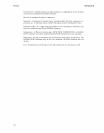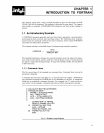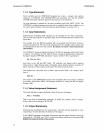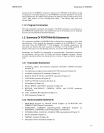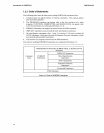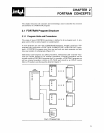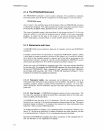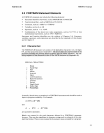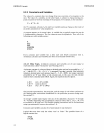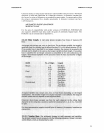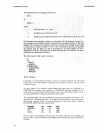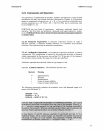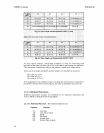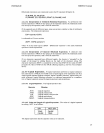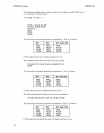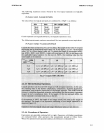
:FORTRAN
Concepts
2-4
2.2.2 Constants and Variables
The value
of
a constant does not change from one execution
of
a
program
to the
next.
The
value
of
a variable, on the other hand,
is
subject to change during pro-
gram execution
or
between runnings
of
the program.
For
example, in the statement
C=A**2+B
the
'2'
is
constant, whereas A,
B,
and
C are variable
and
may change as the result
of
an
earlier calculation
or
value assignment.
A constant appears as its actual value. A variable has a
symbolic name
that
can be
1-6 alphanumeric characters. The first character must be alphabetic. Thus, all
of
the
following are valid variable names:
K
XYZ
B52
ERROR8
STEP3
Every constant
and
variable has a data type
and
length associated with it.
Arithmetic constants
and
variables also have an associated
number
base.
2.2.2.1 Data Types. Arithmetic constants and variables are
of
type integer
or
real (sometimes called 'fixed
point'
and
'floating
point').
An
integer
constant
is
written without a decimal point
and
can be preceded by a
'+'
or
'-'
sign (0, 123, - 34, + 5). A
'+'
is
assumed if no sign
is
present. Real constants
include a decimal point
and
optional sign (5.,
.5,0.5,
.0005).
An
integer exponent
preceded by
an
'E'
may follow a real constant
and,
in this case, the real constant
ne.ed
not
have a decimal point (4E3). Again, the exponent may be signed.
4.2E3
4.2E+3
4.2E-3
(4.2
X
10
3
.or 4200)
(same as above)
(4.2 x
10-
3
or
.0042)
The internal representation, the precision,
and
the range
of
real values
conforms
to
the floating-point conventions established for the particular processor being used.
See section
F.l.
An
integer variable name begins with one
of
the alphabetic
characters'!'
through
'N.'
Variables beginning with an alphabetic character
other
than
I,
J,
K,
L,
M,
or
N
are assumed
to
be type real. This implicit naming convention can be circumvented
using
Type
statements, however (see section 3.1).
Constants
and
variables can also be
of
type logical
or
type character.
Logical
data
may have only the values
'true'
or
'false.'
The possible forms
of
a
logical
constant
are:
.TRUE
.
. FALSE.
FORTRAN-SO



